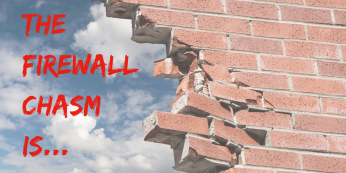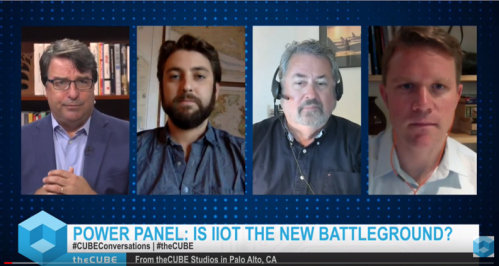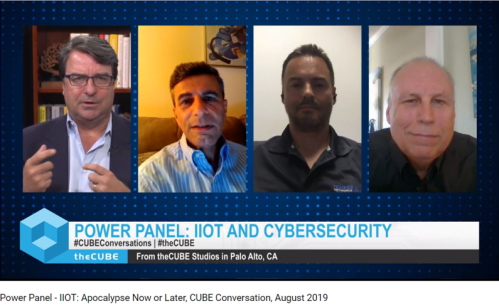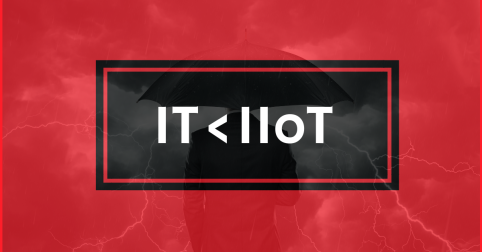The blame game is a tricky effort these days. Maybe its part of the problem, not the solution. Both arguments are flawed. And both are based on faulty zero-sum game theories, despite decades of economic data that prove otherwise.
I cringed at many of the comments made across this year’s political theater. It seemed every other “base rallying cry” was directed at either evil immigrants or evil billionaires being called out as being at the core of today’s problems. They’re taking our money or jobs, etc.

In short. I think both camps are dead wrong. Those demonizing these two groups are exposing deep emotions that run in the opposite direction to what they should be, especially given our challenges today. They are not leaders. They may be the source of the evil. I decided to compile a list of the two pillars of my thought process.
Feel free to change my mind. I think it’s still open.
Immigrants as the embodiment of evil
Even a cursory look at the companies, solutions, processes and enablers of this new age in America (and globally) is filled with the biographies of brilliant, risk-taking, hardworking immigrants who saw a need and filled it. Across tech, business, health, supply chain and food supply our recent history is intertwined with the hopes and sacrifices of immigrants at pretty much every level.
My grandfather, for example, was a farmer and janitor and died in his early 60s working in construction. They spoke Norwegian in the household my dad grew up in. My father insisted that I pick berries and work as a janitor (two-plus years at a fast food joint) before college so that I would respect/understand the sacrifices my grandfather made to put food on my father’s table- and everyone else who entered America under the first statue, the one of necessity.
I got the lesson for the most part, but also understand that we have to manage our borders, the distribution of services, etc. Don’t blame immigrants for public policy mismanagement. Don’t blame them for their willingness to study, work, invest and start a business to forge a better life. Instead, thank them.
Ask yourself a simple question: If all of the immigrants were removed from the USA of the last five decades, would our problems be gone… or might they actually be worse? I think we all know the answer.
Can we move on?
Note: I’ve been in Silicon Valley for the last 20+ years, the engine house for America’s exceptionalism, and there was not a single company that didn’t have someone whose heritage ultimately tracked back to every continent except this one and Antarctica. I just interviewed the CEOs of two startups, one of which has already been acquired to address cloud security issues and the other a play in high performance WAN monitoring. The leadership team and founders… are all immigrants.
Billionaires as the embodiment of evil
You don’t have to look too deeply into the spread of COVID19 to see a pattern. Those whose lifestyles are digital have been spared from the level of exposure of those who aren’t, from work, to leisure and education. And those who have digital careers on average make far more money than those in traditional industries. Digital companies are often far more valuable than traditional companies because of network effects and scale, which are powerful productivity enablers.
If you trace back the key innovators and risk takers who enabled the digital leap, they’re for the most part millionaires and billionaires. The source of their wealth is equity in game-changing companies that offer services most people want, NOT due to stealing money from the public.
These software, services and product companies are multiples more efficient than most of the carbon paper and fax machine bureaucracies of the virtually bankrupt public sector at almost every level.
Are billionaires the reason that a fed relief check takes 30 days and an Amazon electronic refund mere hours? Are they to blame for the funds required ($700k+) to build a single apartment for a homeless person in the San Jose area or the growing gap between revenue intake and service quality in the public sector, well beyond the NYC fax machines accepting unemployment applications?
Maybe, instead, we need more big innovations across the public and private sector. Note: I know places in the public sector that are innovating, taking bold steps to enhance service delivery and reduce costs etc but they are few and far between.
In fact, most billionaire companies are tied to innovations that have kept America exceptional. Yet we demonize them because they don’t sell their companies and “donate” the proceeds to various virtually bankrupt agencies, many of whom haven’t innovated basic operating practices for decades. Anyone familiar with the term “dumb money?”
The Foundation Phenomena / Paradox
Why do billionaires create foundations to address problems (where they can hire and fire and innovate as needed, versus turn it all over to x), where in most cases there is a pre-existing bureaucracy that has been in operations for decades attempting to do the same thing? For starters, most of them have playbooks written before mainframe computing was widely distributed in the form of servers and PCs. Some have warehouses filled with inoperable supplies.
I ask the same question I asked regarding immigrants: If we removed every billionaire from the USA would all of our problems be eliminated… or would they be worse? If we seized their assets in highly productive organizations and handed them over to the public sector would anyone notice any changes over the first five years?
Would they be good ones? Would poverty be erased? I don’t think so. Instead I think those blaming immigrants and billionaires would be looking for a new list of suspects to blame. Most of the “blame gamers” have not driven improvements in society, only stepped up to point them out as a political stepping stone to notoriety.
I agree with Marc Andreessen’s essay on Silicon Valley losing its focus on basic social needs. We’ve just passed through a series of innovations and missteps as usual. And disruption creates unequal payoffs, especially early in the cycle. But the fact that he focused on the Valley as a solution (and a big part of the problem) to the way forward while chiding mayors, governments and aspiring politicians to step up… is a telltale sign. Is it worth the effort? See his spot-on comment:
Demonstrate that the public sector can build better hospitals, better schools, better transportation, better cities, better housing. Stop trying to protect the old, the entrenched, the irrelevant; commit the public sector fully to the future.
Got a fax machine and carbon paper? Maybe you too are cut out for leadership….
The way forward is innovation… not the seizure of billionaire assets and their conversion into larger stacks of carbon paper, file cabinets and fax machines. Or sending immigrants back home to build their former home countries. It’s to cultivate greatness here in the still exceptional USofA.
Feel free to change my mind.



 You can call these new materials atom-scale or… quantum materials, for their strange new properties. It doesn’t matter. Either way, it’s pretty clear we’re likely on the cusp of a new age and many of us are going to feel quite provincial as research continues discover something much more powerful than silicon. Even those of us in Silicon Valley are likely in for some surprises.
You can call these new materials atom-scale or… quantum materials, for their strange new properties. It doesn’t matter. Either way, it’s pretty clear we’re likely on the cusp of a new age and many of us are going to feel quite provincial as research continues discover something much more powerful than silicon. Even those of us in Silicon Valley are likely in for some surprises. [Gururaj] The Capital One breach was a combination of missteps. The most significant factor was an experienced former AWS employee who knew how to abuse different misconfigurations. There were additionally some minor IaaS issues, and I’ve heard that the provider has promised to fix them. Part of this is also a cultural issue of using traditional on premises processes for the cloud and generally how tradeoffs between the need for speed and complex security/compliance policies is resolved. It should be noted that every company will face a combination of these conditions and threats in some shape or form. Misconfigurations combined with insider threats are clearly the biggest risk. The lesson from these types of breaches is that enforcement, similarly, needs to evolve.
[Gururaj] The Capital One breach was a combination of missteps. The most significant factor was an experienced former AWS employee who knew how to abuse different misconfigurations. There were additionally some minor IaaS issues, and I’ve heard that the provider has promised to fix them. Part of this is also a cultural issue of using traditional on premises processes for the cloud and generally how tradeoffs between the need for speed and complex security/compliance policies is resolved. It should be noted that every company will face a combination of these conditions and threats in some shape or form. Misconfigurations combined with insider threats are clearly the biggest risk. The lesson from these types of breaches is that enforcement, similarly, needs to evolve.


 I talked about this issue in more detail at
I talked about this issue in more detail at 
 Maginot Line was built in the run-up to World War II… French military experts extolled the Line as a work of genius… The line has since become a metaphor for expensive efforts that offer a false sense of security.”– Wikipedia
Maginot Line was built in the run-up to World War II… French military experts extolled the Line as a work of genius… The line has since become a metaphor for expensive efforts that offer a false sense of security.”– Wikipedia









Recent Comments